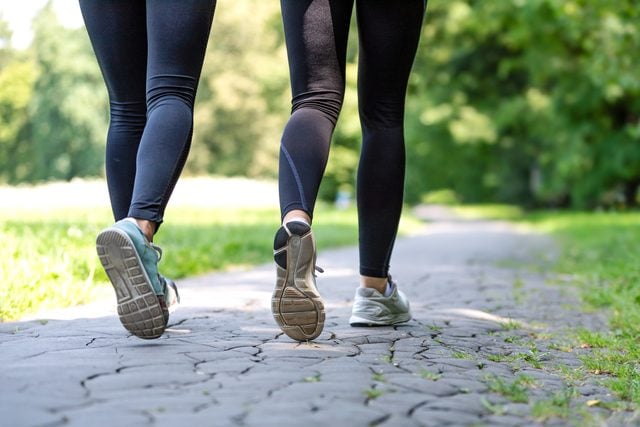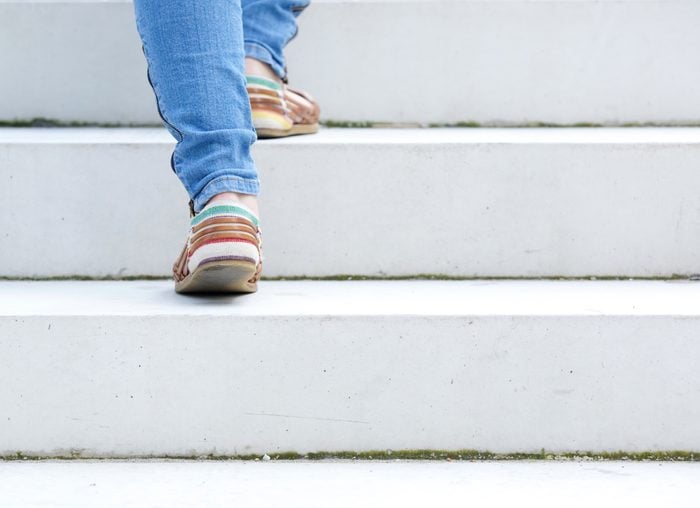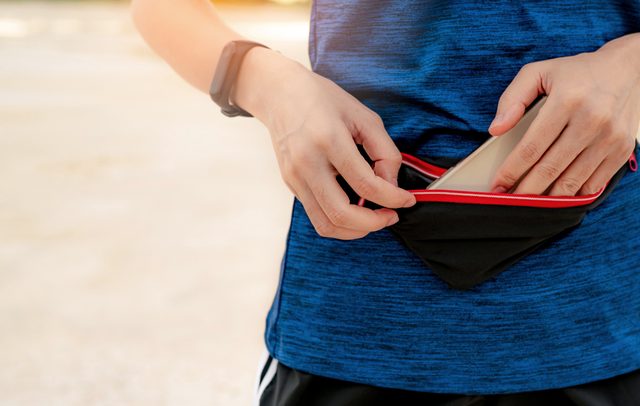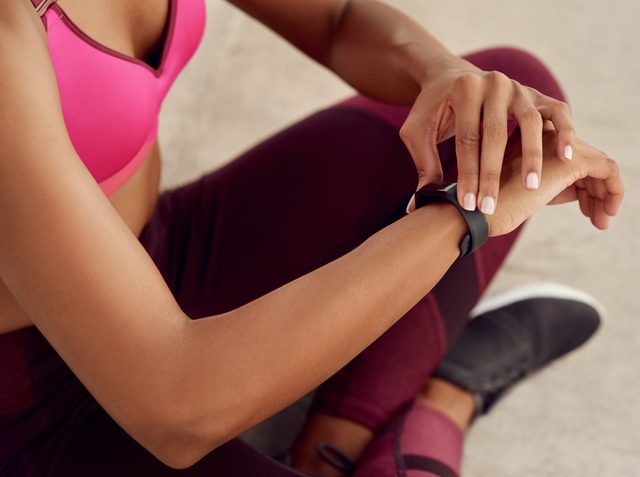How to start a walking routine
Sometimes exercise is the last thing you feel like doing some days. While it can be hard to find the time to lace up your shoes and walk a mile or even around the block, exercise can almost always do your body and mind some serious good, even if you’re not feeling up to it. “There is evidence that people who exercise receive mental health benefits also seem to respond better to stress,” says Melissa M. Markofski, PhD, assistant professor, of the Department of Health and Human Performance at the University of Houston. Here’s how to motivate yourself to start a walking routine.

Stroll outside, with friends
As long as you practice social distancing and wear a mask to prevent the transmission of Covid-19 virus, physical activity can help you get through these stressful times. “One of the benefits of walking with a person or a group is that it can be easier to show up if there is someone waiting for us,” says Markofski. “Many people find they get benefits from the social aspects of group exercise—making connections with people doing the same activity as us.” Exercises like walking also strengthens muscles and bones, increases energy, and improves cardiovascular fitness and brain function. According to a 2019 study in the American Journal of Preventive Medicine, replacing 30 minutes of sedentary time with physical activities can even extend your life. Check out the best reflective clothing and gear for walking for when it’s dark out.

Boost the intensity
Upping your walking pace from slow to moderate can increase your calorie burn and boost the health benefits, says physical therapist Alison H. Chang, associate professor in the Department of Physical therapy and Human Movement Sciences at the Northwestern University Feinberg School of Medicine in Chicago. There are several ways to do that. First, try the “talk test,” she says: “If you can talk but not sing [while walking], you are engaged in moderate-intensity activity.” To rev up your metabolism, try alternating between 100 and 130 steps per minute to take advantage of the benefits of interval training and burn more calories. “Be mindful of your posture and practice diaphragmatic breathing during brisk walking to further enhance the cardiopulmonary benefits of fitness walking,” she adds. Here are some common walking mistakes you’ll want to avoid.

Bring your pooch
People tend to talk each other out of workouts, but dogs are always up for a stroll. And you both gain big health benefits: Dog owners are generally more active than non-owners, and may even be mentally and physically healthier, according to a 2017 study published in the International Journal of Environmental Research and Public Health. If you’re thinking of getting a dog in the hopes of becoming more active, research on dog/owner behavior in the journal BMC Veterinary Research suggests that you’re likely to take a big dog out more frequently than a small one—making it easy to start a regular walking routine. And the more Fido tries to jump on the furniture the more incentivized you will be to take him outside. Just make sure to walk on this side of the road.

Use a bad mood as motivation
Walking can impact your mood, according to the National Institutes of Health. It boosts levels of feel-good substances in the brain, and you don’t have to get out there and sweat to get the benefits. Walking is a good exercise to just focus on moving, even if that means taking a walk around the block. If you’re bored by your typical exercise routine, grab a pal and get outside. Plus, research has found that walking for just this long is a mood-boost.

Reaching for a cookie? Lace-up your shoes instead
People who walked or did other forms of exercise had less of an appetite for unhealthy foods, including sweets, according to a 2018 study in the journal Nutrients. Walking may be particularly helpful in avoiding stress eating. Skip the candy and soda when you’re feeling anxious, and instead try these 11 foods to help manage stress.

Head out after a meal
A quick post-meal walk helps clear sugar from the blood, preventing spikes that can take a toll on people with diabetes or who are at risk of developing it, according to the American Diabetes Association. This form of fitness is ideal even for those with diabetes or other health conditions, says Chang. “Walking may seem simple, but it is an excellent form of exercise and provides multiple physical and psychological benefits regardless of age or health condition,” she says. “It is highly accessible given that it requires little to no equipment.” In addition to a walking routine, these lifestyle habits can also help you achieve healthier blood sugar levels.

Put your phone away
You can’t get the benefits of walking if you get hit by a car! Thousands of people are sent to the emergency room for injuries related to using a cell phone while walking—and that number’s going up, according to the National Safety Council. And it’s likely a gross underestimate of injuries since not all people who are hurt go to the ER. Tempted to text or sneak a peek at your email? Just don’t.

Use a tracker for motivation
Wearing a Fitbit or checking your Apple Health app won’t make you walk more—but it could help, according to a 2020 report in Digital Health. The study of 81 people who used a tracker to manage their exercise found that 66 percent of participants reported an increase in their exercise habits after owning their device, and most planned to start exercising at least three days a week. The more essential gear for your walking routine is for your feet—here are the best walking shoes podiatrists recommend.